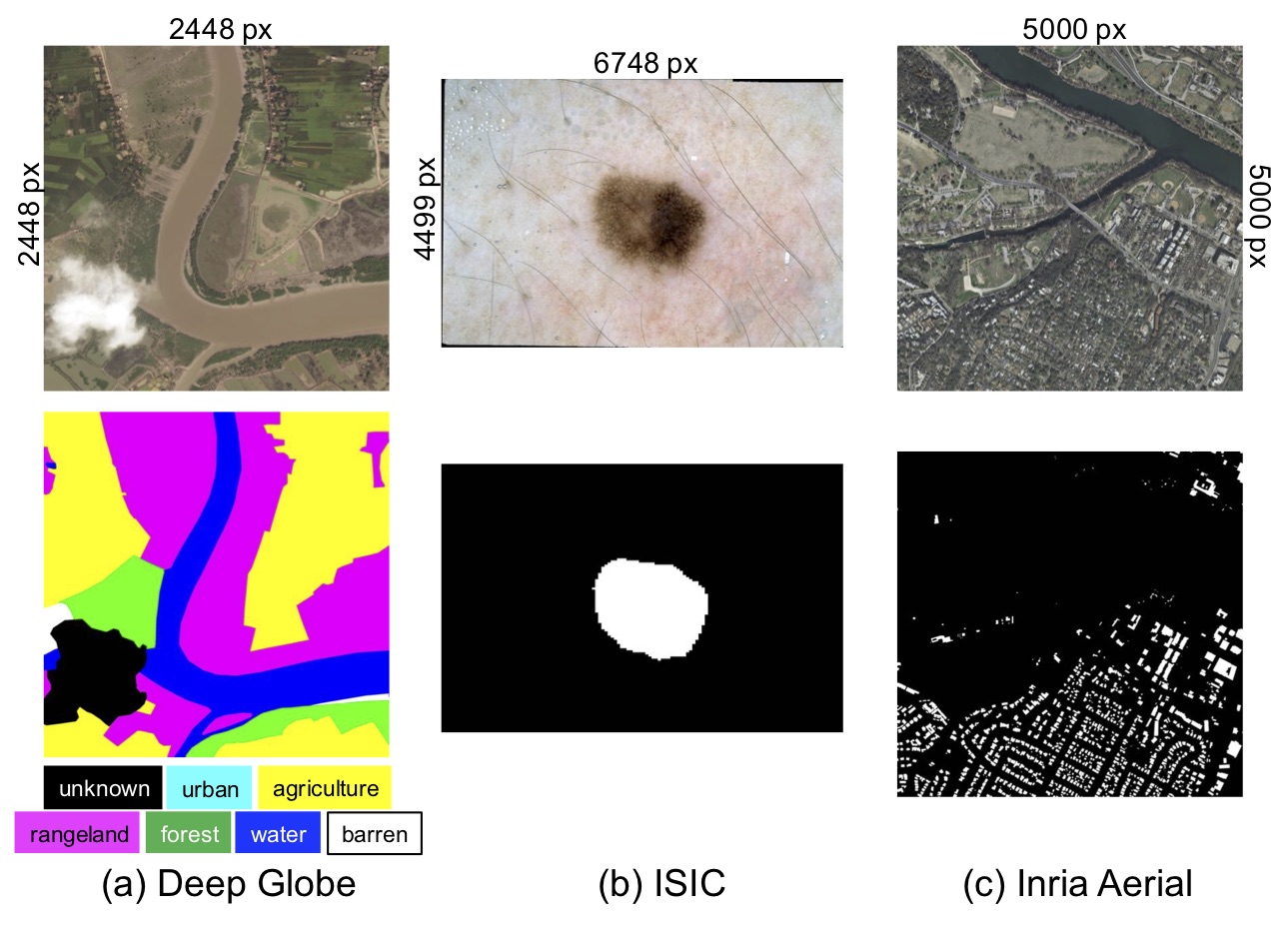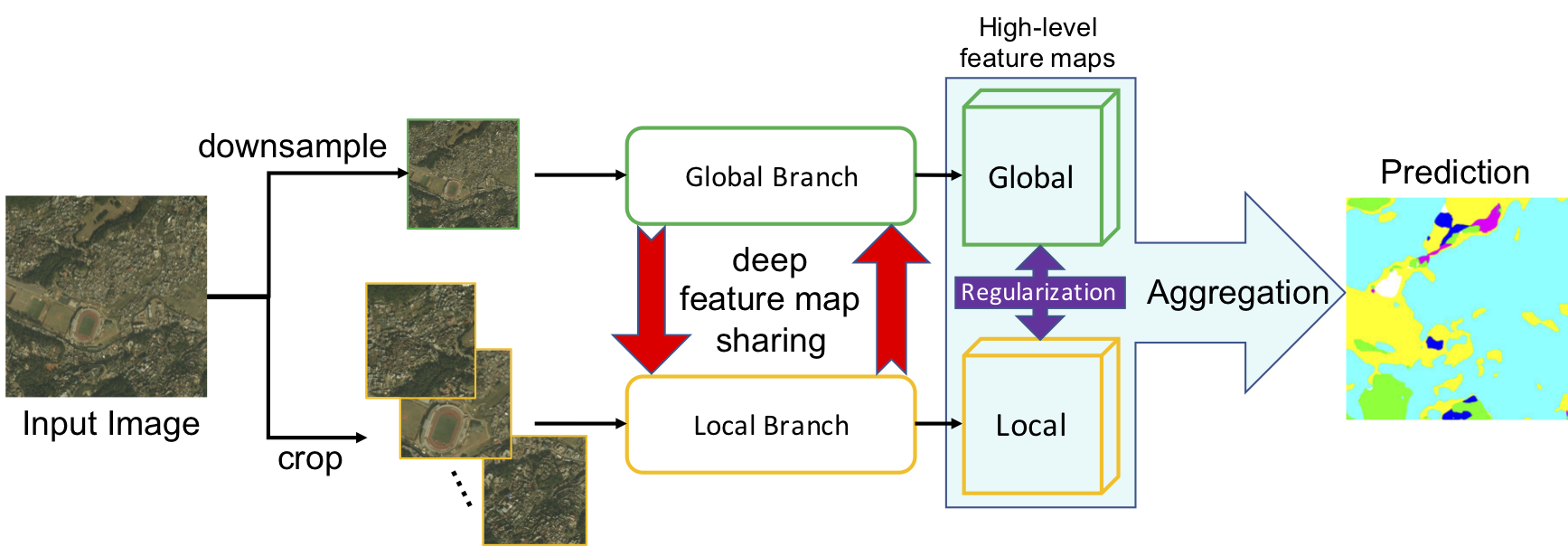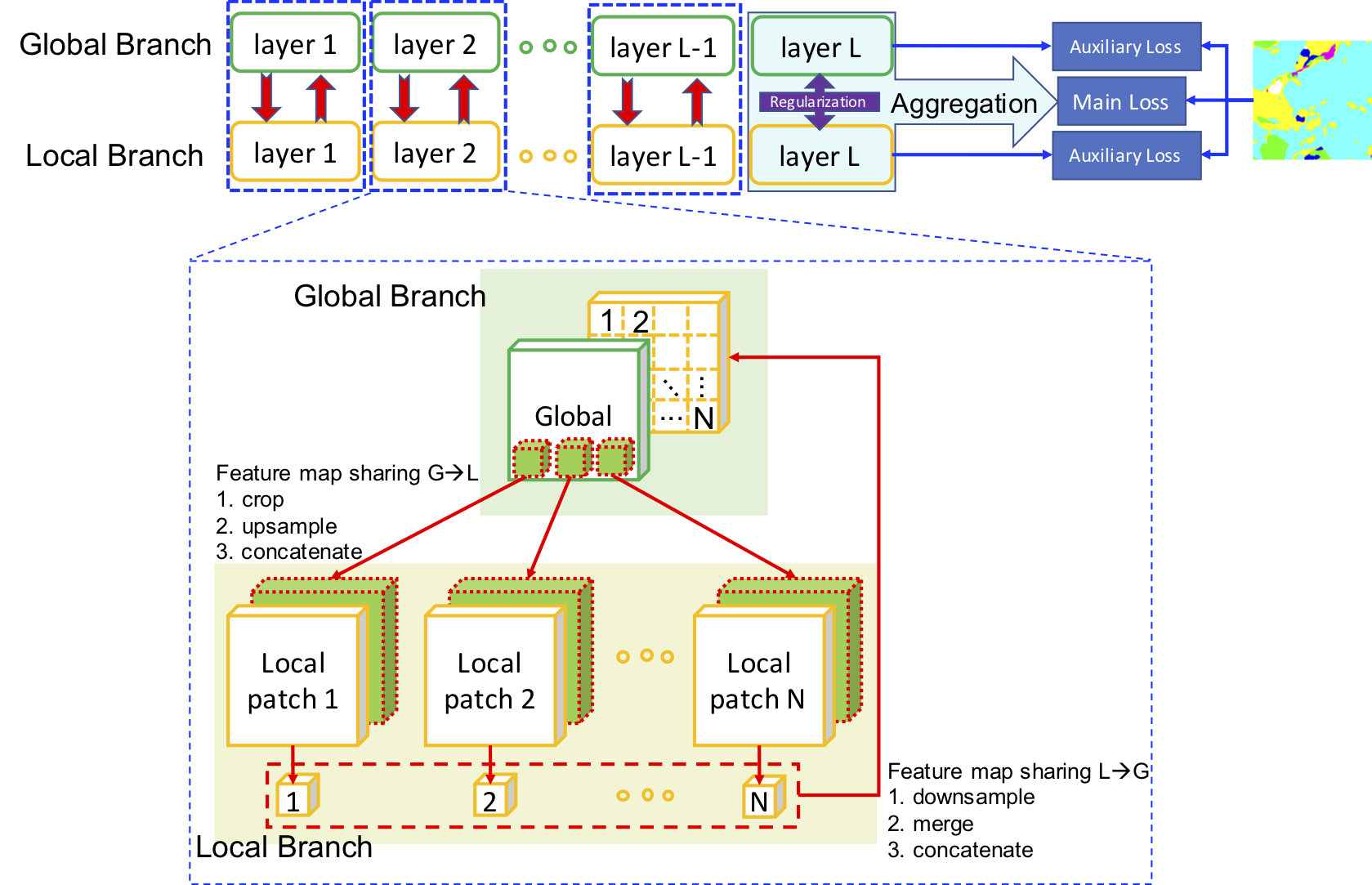GLNet for Memory-Efficient Segmentation of Ultra-High Resolution Images
Collaborative Global-Local Networks for Memory-Efficient Segmentation of Ultra-High Resolution Images
Wuyang Chen*, Ziyu Jiang*, Zhangyang Wang, Kexin Cui, and Xiaoning Qian
In CVPR 2019 (Oral). [Youtube]
Overview
Segmentation of ultra-high resolution images is increasingly demanded in a wide range of applications (e.g. urban planning), yet poses significant challenges for algorithm efficiency, in particular considering the (GPU) memory limits.
We propose collaborative Global-Local Networks (GLNet) to effectively preserve both global and local information in a highly memory-efficient manner.
-
Memory-efficient: training w. only one 1080Ti and inference w. less than 2GB GPU memory, for ultra-high resolution images of up to 30M pixels.
-
High-quality: GLNet outperforms existing segmentation models on ultra-high resolution images.

Inference memory v.s. mIoU on the DeepGlobe dataset.
GLNet (red dots) integrates both global and local information in a compact way, contributing to a well-balanced trade-off between accuracy and memory usage.

Ultra-high resolution Datasets: DeepGlobe, ISIC, Inria Aerial
Methods

GLNet: the global and local branch takes downsampled and cropped images, respectively. Deep feature map sharing and feature map regularization enforce our global-local collaboration. The final segmentation is generated by aggregating high-level feature maps from two branches.

Deep feature map sharing: at each layer, feature maps with global context and ones with local fine structures are bidirectionally brought together, contributing to a complete patch-based deep global-local collaboration.
Training
Current this code base works for Python version >= 3.5.
Please install the dependencies: pip install -r requirements.txt
First, you could register and download the Deep Globe "Land Cover Classification" dataset here: https://competitions.codalab.org/competitions/18468
Then please sequentially finish the following steps:
./train_deep_globe_global.sh./train_deep_globe_global2local.sh./train_deep_globe_local2global.sh
The above jobs complete the following tasks:
- create folder "saved_models" and "runs" to store the model checkpoints and logging files (you could configure the bash scrips to use your own paths).
- step 1 and 2 prepare the trained models for step 2 and 3, respectively. You could use your own names to save the model checkpoints, but this requires to update values of the flag
path_gandpath_g2l.
Evaluation
- Please download the pre-trained models for the Deep Globe dataset and put them into folder "saved_models":
- Download (see above "Training" section) and prepare the Deep Globe dataset according to the train.txt and crossvali.txt: put the image and label files into folder "train" and folder "crossvali"
- Run script
./eval_deep_globe.sh
Citation
If you use this code for your research, please cite our paper.
@inproceedings{chen2019GLNET,
title={Collaborative Global-Local Networks for Memory-Efficient Segmentation of Ultra-High Resolution Images},
author={Chen, Wuyang and Jiang, Ziyu and Wang, Zhangyang and Cui, Kexin and Qian, Xiaoning},
booktitle={Proceedings of the IEEE Conference on Computer Vision and Pattern Recognition},
year={2019}
}
Acknowledgement
We thank Prof. Andrew Jiang and Junru Wu for helping experiments.

